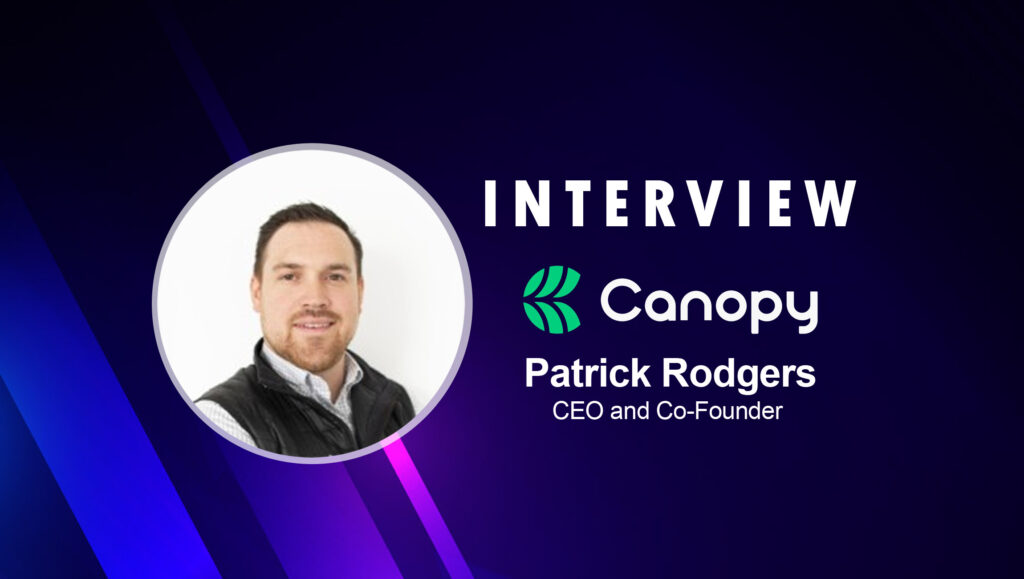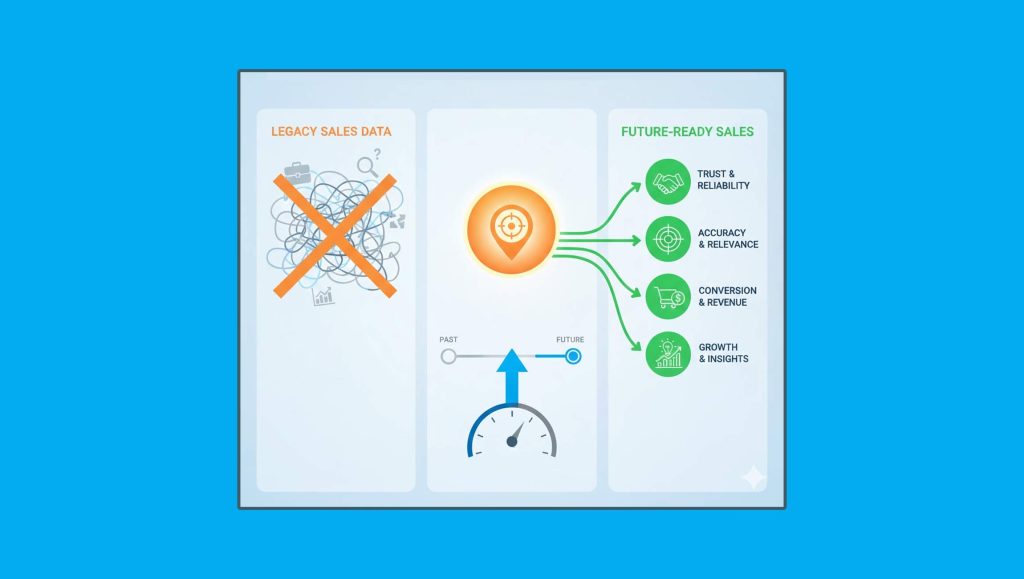Forecasting and visibility are the two biggest roadblocks that B2B and tech sales teams struggle with feels Patrick Rodgers, CEO and Co-Founder at Canopy. Catch this complete interview where Patrick shares a few of his top learnings from his journey in sales and his thoughts on what sales teams should be doing to optimize their process and targeting efforts. _____ My career path has consisted of a decade of sales roles — I’ve been on the ground selling, I’ve coached my fellow sales teammates, and I’ve led revenue teams. I am a 2010 graduate of the Kelley School of Business at Indiana University, and recently joined the Kelley School of Business Alumni Association Board of Directors. I moved to Chicago after graduating, and have had the privilege of spending the last 10 years leading revenue teams at growing and scaling tech companies. When we started Canopy, I was splitting time between Chicago and Indianapolis. We officially moved our family back to Indianapolis, our hometown, in 2019 and had our first son that same year. Canopy evolved from the constant struggle that I faced as a sales leader — trying to identify which reps were the most productive and what strategies and channels were having the greatest impact on our business. CRMs simply don’t provide the level of detail or statistical analysis needed to accurately understand and compare teams, sources, or even activities. As a manager, I would spend crazy amounts of time in spreadsheets each month in order to understand my team’s performance. As soon as I’d finish analyzing the data, it would already be out of date. I couldn’t leverage any of my findings in real time, and I had no quick way of knowing when or what had changed. We were constantly looking behind us, which meant we were operating in a reactive state. As I worked with hundreds of sales teams and leaders during my time at LearnCore and Showpad, it became increasingly clear this was a massive problem affecting all revenue teams — not just me. We were all playing from behind, either because we didn’t have access to the right data, or because we were using bad, outdated data. When we considered the advancements that were being made in other industries thanks to business intelligence, artificial intelligence, and machine learning, combined with the fact that sales teams have more data than ever before, we knew that this was our chance to give revenue leaders the real-time, accurate information that they need to be proactive. We’re helping sales managers look ahead and drive revenue forward, rather than constantly play from behind. Read More: SalesTechStar Interview With Cody Liebman, VP Of Sales At AspireIQ Fundraising is a lot like selling. It’s a numbers game, which can be difficult as you try to balance fundraising and running a business. Not every investor will be a good fit. My biggest recommendation is to treat fundraising like a sales process — do your research and identify the funds that match your stage, traction, and business model in order to narrow the field. Begin building relationships before you’re in need of capital. Treat early conversations like discovery, as a time to understand the criteria an investor is looking for, and where you need to be from a traction and progress standpoint for them to invest. If you hear “this isn’t the right time,” or “we need to see more,” feel confident in asking for a concrete idea of what that looks like. It’s worth building that relationship, as it may pay dividends down the road and also help you identify who is truly not interested versus who may be a good fit in your next round. The biggest learnings of my career revolve around the buyer and training. First, your sellers should be trained on and know exactly what their buyers do for a living. They must understand how that person is compensated, what motivates them, what pain they have, what their boss cares about, and why what you are selling helps this person be better, earn more, or realize their goals. Once sellers understand this, they can have true empathy and be a domain expert. That leads to greater trust and the ability to relate. The second biggest lesson I’ve learned is the importance of identifying a Key Initiative. A Key Initiative is something that is top of mind for not only your buyer, but for their organization as a whole — something they are trying to solve today. Any Key Initiative has a budget and timeline associated with it. If you can uncover this, you have a true opportunity, and it’s up to the salesperson to align it to the product and guide the buyer. Finally, train your teams on how a product like yours is actually purchased. What are the steps, hurdles, and gates that your buyer or champion will have to get through in their organization? The majority of any sale is happening without a sales person present. Your sellers must prepare buyers to sell internally, help them identify hurdles, and be able to proactively guide them through their own internal buying process. If you have trained them to do each of these steps well, it will drastically increase your win rates and decrease your sales cycles. Read More: SalesTechStar Interview With Patrick Lannon, Chief Renewals Officer At Acoustic The most important aspect of any sales or marketing tech stack is data capture and analysis. A sales or marketing tech stack should be built around this singular goal. When you think about adding to or building out your stack, you need to start by evaluating the data you are not easily or efficiently capturing today. From there, you must prioritize what tool or technology will have the greatest impact — focus on what issues are present today and what will drive results. For example, a CPQ system isn’t going to increase pipeline or drive top-of-funnel conversions. Not every tool should be purchased… Finally, don’t forget to involve the end users. So many tools sound like a great idea or seem cool, but once “shiny thing syndrome” wears off, the product isn’t actually adopted. If the end user of the tool doesn’t see the value, it won’t be used, meaning it’s going to waste. Forecasting and visibility are the two biggest roadblocks that I see sales teams struggling with most often. For most organizations, forecasting is done manually in spreadsheets or directly in their CRM. It doesn’t provide any mechanism that helps sales teams get better at forecasting. It ultimately creates a game of telephone, where you don’t have the real picture of what’s happening at the seller level. As for visibility, the manual data analysis that takes place within sales and revenue operations teams is a huge time suck and is constantly out of date. Even those using traditional business intelligence tools have to spend incredible amounts of time designing dashboards, charts, and graphs that only they can understand. This provides little to no value to the frontline managers and revenue leaders that desperately need visibility into how their reps and deals are performing. The best way to improve revenue generation in our current environment is through targeting the right buyer. This requires organizations to dig in much deeper than they normally would on the industries, geographies, and businesses that they are going after. Some industries are thriving while others are still struggling. Focus on where you are having success and monitor, at a granular level, what segments are picking back up in terms of meetings, opportunity creation, and general interest. The other major factor is taking a multi-threaded sales approach, especially as it relates to the decision makers. There will, without a doubt, be much greater scrutiny on budget approvals. You can expect a member of finance to be involved in most decisions. Your traditional decision makers may not have the same power they once did. Young sellers and managers should read as many business books as possible. Sales books are great, but you can learn so much more from reading about other people’s mistakes and lessons learned, even if they aren’t in sales. Having a broad understanding of how business works and the implications of decisions and investments is critical. The more insight you have around how the decisions you make impact your company and team, the better leader you will become. Whether that means being your client’s advocate or building a team — knowledge is power. Learn everything possible and never stop. Managers today are overwhelmed with disconnected dashboards, stale data, and competing priorities. Managers need answers, not dashboards. Canopy gives them the tools they need to make a consistent and lasting impact on your sales team.Can you tell us a little about yourself Patrick?
How did the idea of Canopy come about?
Given your recent funding success (congratulations!), we’d love it if you can share some funding tips for early stage entrepreneurs’ who can learn a tip or two from your story!
Given your time in the B2B/tech marketplace, we’d love to know about some of your biggest sales and marketing learnings, maybe a little about your best highlights from your time at Showpad?
We’d love your thoughts when it comes to best practices on creating the ideal salestech-martech stack? What according to you should teams keep foremost in mind?
When it comes to marketing operations and automating routine tasks, what are some of the biggest challenges you still see team / B2B teams struggle with?
When it comes to enhancing revenue generation efforts as economies and business reopen after the Covid-19 lockdowns slowly lift, what top tips would you share?
Any last few thoughts to share before wrapping up (on leadership / a favorite quote / top sales books to read, etc)

Also Catch, these latest episodes of the SalesStar Podcast!





















